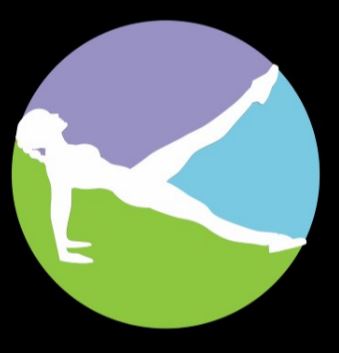.. embedded within the a great mosaic out-of macrosociological dynamics from colonialism and people”. In this article I examine just how a parallel otherwise subservient set off cultural character lead an equivalent association from gender which have emergent federal term in another (post)colonial culture, Aotearoa/The latest Zealand. However, the fresh new principal iconography of new Zealand title are masculine. Detailing this requires an examination of the various event away from colonisation in relation to emerging nationalisms: India is a nest regarding “limited settlement” or field, where a little group of light Western colonists ruled an enormous indigenous populace; while The latest Zealand try/is good “settler” people noted of the bulk migration from always light settlers (Pearson 2001, 4-5; Ashcroft mais aussi al, 211). Brand new development off dominating narratives out of nationalism is actually thus associated generally on the previous situation with local groups’ struggle to throw-off international control; regarding the latter significantly more to settler attempts to insist a character distinct from the coloniser in addition to indigenous individuals. These varying narratives from national identity consequently create sets of gendered identifications: India and you will many other anti-colonial nationalisms mainly based “a relationship between women love and also the vulnerable country”, Hindu woman just like the “uncolonized sacred federal space” (Mookerjea-Leonard). But for settler communities it absolutely was the exact opposite – national identity try associated with work regarding colonization, that have “stamping” a character with the home (and you may marginalising the local inhabitants in the process). Although not, each other systems is patriarchal within association out of masculinity and you may womanliness with divisions out of craft and you will passivity, and societal and personal area. One another behave as highly energized social signifiers that seek to get together again the countless paradoxes and you can stress in the emerging cultural structures out-of label, and produce unified narratives off nationalism (commonly repressing choice narratives along the way) courtesy gender.
Creating when you look at the matter 38 for the record, Debali Mookerjea-Leonard recommended one to Hindu nationalists within the pre-Liberty India engaged in https://lovingwomen.org/tr/blog/bir-es-bulmak-icin-en-iyi-avrupa-ulkesi/ “a method away from myth-and also make in which feminine sexual love are endowed to the standing out-of the fresh new transcendental signifier away from national advantage
For the an autobiographical passing of their 1987 history of masculinity within the The brand new Zealand, A beneficial People’s Country?, Sportsman Phillips describes “an effective legend away from pioneering dick … a type of bravery and you may bodily toughness” one to molded his look at what one should be (3). This design, given that explained into the guide sleeve, is actually of a beneficial “rugged fundamental bloke – fixes things, solid and you can tough, have their ideas to himself, always scornful of women”. It’s considering a good puritan functions ethic allied to help you a keen ethos out-of personal masculinity based on “mateship” – the male companionship off leaders joined by common physical struggle facing the current weather, inside conflict otherwise athletics, all of the cemented on the street. Both men and women keeps attested for the stamina regarding the archetype. Well-known This new Zealand feminist publisher Sandra Coney produces regarding her dad’s generation:
It actually was a people of one’s human anatomy, as opposed to the attention (23)
They might become muscled, sinewy and you can difficult; maybe not effete, poor and you can bookish. They would fit the bill guys; doers maybe not thinkers. It conveyed its people not for the theatres, art galleries or pomp, but into the rugby job, throughout the backblocks [areas of rural homes] in the wild.
Like many other “settler” countries (Australian continent, Canada), The fresh new Zealand possess typically understood in itself having a model of tough, outlying, “pioneering” white manliness whose exposure are naturalized because of the connection on the land and you will a good “frontier” model of pragmatic, bodily business (Pearson 2001, 7). Subsequently, discourses away from male homosociality, men flexibility and freedom in the “feminising” has an effect on away from domesticity, “polite” neighborhood and imported mass people was basically central into the build out of pakeha social identity. (Pakeha was a great Maori title you to makes reference to white settlers. Only a few white The Zealanders take on the word, however [Spoonley; Queen 1999, 10]). “Brand new Kiwi bloke”, as i usually henceforth title your, features a lengthy reputation of sign in the regional society, out of literature in order to flick, Tv and you will sounds. Historically, the country’s federal heroes and you will prominent social signs, out-of sports athletes such as the The Blacks rugby people and you may mountain climber Sir Edmund Hillary so you’re able to conflict heroes (Sir Charles Upham), editors (Barry Crump), actors (Bruno Lawrence) and even boffins (Sir Ernest Rutherford) had been placed in a great “history” out of pioneering, constantly light males. So it background came around broadening attack from the seventies and eighties from feminism and local teams (Maori), especially in the brand new debate close the fresh 1981 Springbok football tour, and this questioned the centrality off rugby (so because of this masculinity) to federal identity (Perry 1994, 17; Phillips 262- step 3, 270-1). In finishing their guide, Competitor Phillips suggests that the new “bloke’s” months try numbered, a sentiment and indicated because of the other people (Phillips 288-9; Campbell, 2-9; Awatere).
